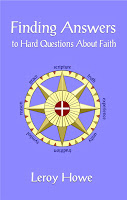About the time I graduated from seminary, a major era in American religious life was just beginning its slow, irreversible decline. In specific, a cluster of Protestant denominations professing to constitute the Christian mainstream in this country was about to lose a dominant position in American culture. It took the first twenty years of my professional life for me to see the partial drying up of this once energetically moving stream as something which could be for the better and not only for the worse.
Still struggling to swim in the barely trickling waters of the Protestantist mainstream are at least these denominations today: American Baptist, Disciples of Christ, Episcopal, Evangelical Lutheran, Presbyterian USA, Reformed, United Church of Christ, and United Methodist. Sadly, more than half of their congregations have fewer than 100 members, well below the number that most church strategists now believe is necessary to support a full-time pastor and a minimally effective ministry of nurture and outreach. The average age in most of them continues to be on the increase. And their membership growth, where there is any at all, generally falls far short of the growth rate in the surrounding populations.
Typical mainstream congregations, in spite of their well articulated theologies of inclusiveness, are still predominantly Anglo-American, upper-middle class aspiring, and dependent upon a highly educated clergy. In all three respects, they are swimming upstream against major demographic trends in society and ecclesial trends in the conservative-evangelical churches that currently are dominating the Protestant landscape. Not surprising, therefore, is the Pew organization’s finding that the Protestant mainstream now represents under 20% of the population of the United States.
It has been commonplace to attribute the decline of mainstream Protestantism to its disastrous clinging to a faulty liberal theology when the wider society was turning conservative on just about everything. The liberalism-is-the-problem argument may have had some validity at the beginning, but it is hardly credible anymore. Liberalism’s classic emphases on unity-in-diversity and the pursuit of universal justice are being celebrated just as often by conservative churches as they are by liberal ones today, and the acknowledgment of theological pluralism as inevitable may not be far behind in all but the most off the wall fundamentalist churches and denominations.
More to the point of accounting for the decline is the particular approach that mainstream Protestantism continues to take toward the (legitimate and important) cause of bringing about Christian unity on both a national and world scale. Oversimplified, but not by much, the approach tied ecumenicity very strongly to the promotion of denominational mergers, which many people only slightly misunderstood as an agenda for the creation of a SuperChurch.Two problems have plagued this approach from the beginning. The first was that the ecumenical spirit in this country has flourished best from the grass roots up, and not from institutional structures and hierarchies down. The institutional side of ecumenical movements has always been a pretty high-up/top-down operation, all too frequently enmeshed in clouds of condescending smugness and arrogance that blinds its leaders to Christian action on the ground and in the streets, and the never-ending gatherings of two, three and more disciples there to meet the Lord.
The second problem is that denominations themselves have come increasingly to be viewed as obstacles to, rather than essential supports for, the vitality of Christian congregations and faith. At most denominational headquarters perched atop the shorelines of the Protestant mainstream, visions for regaining cultural position more often than not reduce to faddish schemes for organizational re-structuring, with a little efficiency training for leaders along corporate more than spiritual lines thrown in for good measure. A major consequence is the siphoning off of energy and resources better spent in undergirding the ministry and mission of local congregations themselves. At least, this is the perception of droves of former mainstreamers who believe that there is more breathing room for the Holy Spirit in the non-denominational mega and cyberchurches that are making their presence and influence powerfully evident everywhere.
It may be because I have never been much of a swimmer anyway that splashing around in the diminished waters of the Protestant mainstream still remains for me a fulfilling way to live out the Christian life. If finding some rapids to challenge, as many of my conservative Christian friends are doing with gusto, is your thing, too, then more power to you. But less frenzied streams, whose headwaters continue to be churned by scripture, tradition, experience, and reason in frothy mixes, and whose revelers include dramatically increased numbers of highly involved laypersons, also flow toward that ocean of Being in whose temperate waters there is room for all.
ADDENDUM: On Columns That May Be Worth A Second Reading
Last year, I gave several talks at the end of which readers of this column came up to me and expressed both their appreciation for it and helpful suggestions for making it better. One suggestion was to re-run some of the columns which were favorites at the time, since we are now into the eighth year of Howe About and since new readers may not yet have ventured into searching out the earlier pieces. I came up with an alternative, to list a few and invite readers who may be interested to follow the links to them provided below:
- August 14, 2002, Being a Conservative Christian Without Losing Your Faith
- August 28, 2002, Being a Liberal Christian Without Losing Your Faith
- September 24, 2003, Anger in the Bible
- November 26, 2003, Marriage and the Constitution
- January 14, 2004, The Da Vinci Code
- August 11, 2004, Who's In, Who's Out, and Who Says
- October 13, 2004, The Right to Health Care
Later on, I will list a few more columns that have also evoked a good bit of response.
 Finding Answers to Hard Questions About Faith is online
Finding Answers to Hard Questions About Faith is online